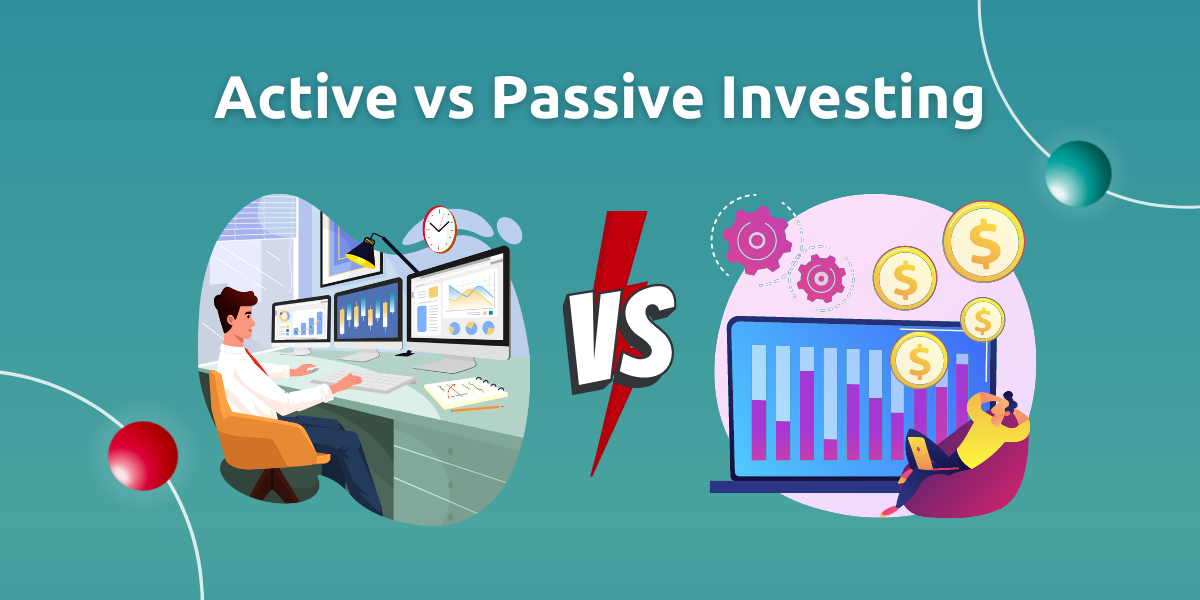The Power of Passive Investing

By: Andrew Neipp
Introduction
The terms “active” and “passive” investing are frequently used in the financial industry. While passive investors use a more laid-back strategy, active investors regularly buy and sell stocks to outperform the stock market. Simply put, passive investors make investments in S&P 500-style market-tracking funds.
They opt for investments in index funds, such as those that track the S&P 500, and allow their money to grow with the overall market. This approach has garnered significant attention and has even been championed by some of the most successful investors, like Warren Buffett.
The simplicity, reliability, affordability, risk diversification, historical performance, and support from eminent investors are what give passive investing its potency. It provides a hassle-free and successful strategy to increase your wealth over time. For individuals with the knowledge, abilities, and time to actively manage a portfolio, such as a hedge fund, it can be rewarding, but for the majority of investors, passive investing is a great choice. It provides a trustworthy, hassle-free, and tried-and-true method for accomplishing financial objectives. Hedge funds are distinct from the low-maintenance nature of passive investing because they are managed by investment experts using a variety of methods to achieve the highest return.
Let’s take a closer look at a well-known competition that featured none other than legendary investor Warren Buffett to better understand why passive investing is so amazing.
The Buffett Challenge
The renowned investor Warren Buffett decided to place a wager. He issued a challenge to any trendy hedge fund manager to try and outperform a straightforward S&P 500 index fund over ten years. $1 million would be given to the winner’s preferred charity.
Many hedge fund managers seized the opportunity. They were confident that they could outperform the stock market. To try and increase their profits, they traded stocks frequently, conducted extensive research, and used sophisticated tactics.
As the years went by, a startling event occurred. The majority of the hedge funds had underperformed the S&P 500 index fund when the ten-year challenge came to an end in 2017. The fancy hedge funds underperformed Warren Buffett’s recommendation, a low-cost S&P 500 index fund, which fared extremely well. Passive investing won by a landslide.
This test demonstrated the immense power of passive investing. The passive strategy performed well by simply tracking the performance of the market as a whole while hedge fund managers were busy trading and conducting research. It became evident that trying to beat the market through clever trading might not be a good idea for many people.
Pros of Passive investing
For investors of all skill levels, passive investing is a desirable option due to its many appealing benefits.
- Affordability: Lower fees than actively managed funds. The decreased costs can significantly boost long-term returns, allowing money to grow more effectively.
- Diversity: Investing in funds that follow broad market indices, such as the S&P 500, encourages diversity. This reduces the danger involved in placing all investments into one stock by ensuring that money is dispersed among numerous stocks.
- Simplicity: Passive investing doesn’t require individuals to be experts in finance. Both novice and experienced investors can utilize it because of its simplicity and accessibility.
- Maintain composure: Making sound financial decisions doesn’t have to be a constant source of concern. Achieving more consistent, long-term growth is attainable by remaining invested in the market through both prosperous and challenging periods via passive investing.
- Success over time: Numerous studies have consistently demonstrated that passive investing frequently beats many other complex investing techniques in the long run, making it a wise choice for people seeking steady and stable development for their money.
Conclusion
The ease, inexpensive costs, and successful track record f passive investment give it power. Society has learned from the Buffett Challenge that even highly intelligent financial gurus often struggle to outperform the stock market. By choosing passive investment, individuals can take advantage of the market’s expansion while minimizing costs and dangers.
Whether you’re a pro investor or just a beginner, remember this lesson from Warren Buffett’s bet: passive investing can be a great way to reach your financial goals. The remarkable power of passive investing lies not only in its simplicity but also in its potential to help you achieve your financial goals consistently and with peace of mind, making it a valuable addition to any investor’s life.
Source: https://www.ft.com/content/17b2127b-2548-4c15-bf34-056b49793ba2


